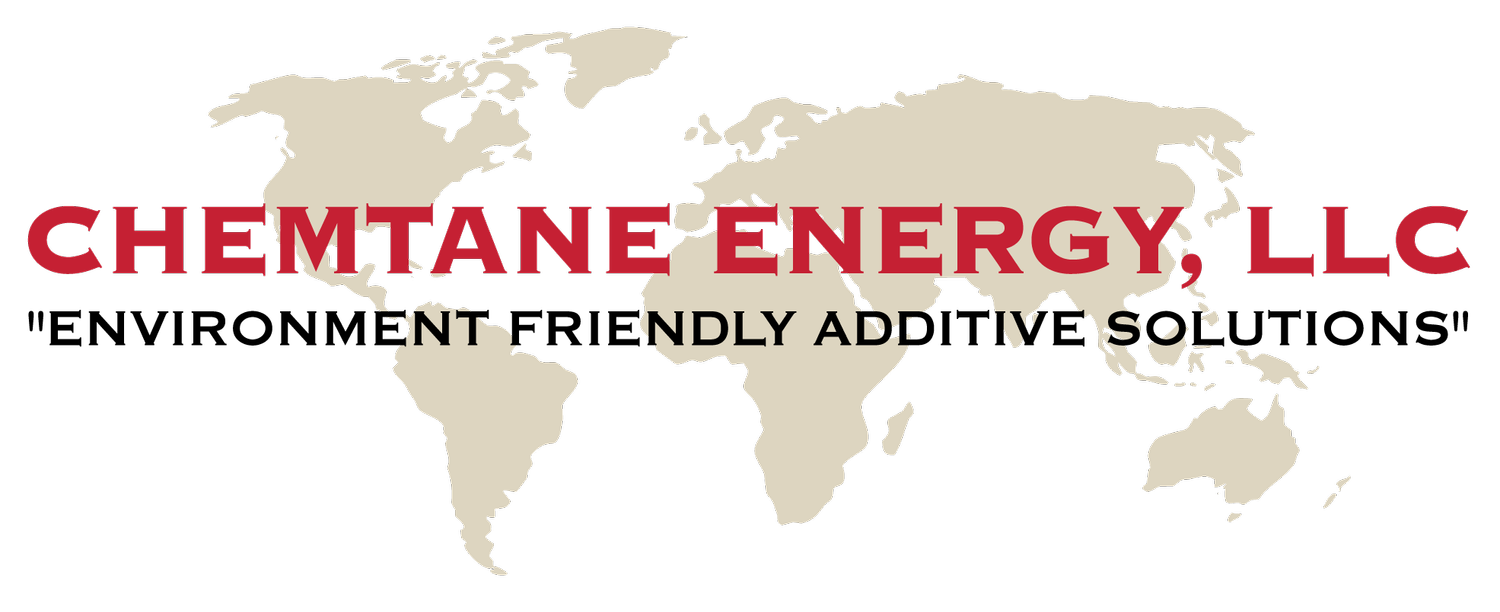
Chemtane 2
Chemtane 2 Literature
THE KEY FACTORS IN SELECTING A FUEL GAS ARE:
a. Flame temperature because It is an indicator of cutting and heating ability;
b. BTU content because it is an indicator of the quantity of energy being purchased, and
c. The unit cost which must be compared with competitive products.
Chemtane 2 is an outstanding product because it has a high flame temperature of *5,800°F + in oxygen, a flame structure well suited to heavy burning and heating, an energy content of 2,810 BTU's per cubic foot of vapor, and startling cost effectiveness. These properties enable Chemtane 2, to cut, heat treat, flame harden, metallize, and braze quickly, cleanly and economically.
In starting a cut on plate, pipe, or any structural shape, the preheat time will be noticeably less than competitive fuels. This is due to the flame temperature of Chemtane 2 being several hundred degrees hotter than other fuel gases including acetylene, which brings the steel to ignition temperature more quickly. The cutting speed is appreciably greater when making straight cuts, beveling, and gouging due to the higher flame temperature which preheats the surface rapidly as the torch advances. At the same time the heat release of the high energy secondary flame adds to the heat of combustion of the burning steel beneath the surface. The flame temperature-secondary flame combination allows intricate pattern to be accurately cut and sharp turns to be made without "losing the preheat". Piercing is accomplished quickly and cleanly. Cuts are smooth with no gouge marks. There are no rolled edges. Preheating with another torch is often eliminated. These results are obtained with either a hand or machine torch.
As various types of cuts are made, it will be noted that slag is minimal and weldback does not occur. Again, labor expense is saved because cleanup time is virtually nil. Weldback does not occur because Chemtane 2 does not have an excess of carbon available during combustion as is the case with acetylene and some other fuel gases. Extra carbon promotes the welding process and causes weldback. It is the absence of the excess carbon which makes gas welding with Chemtane 2 difficult. On the other hand, those fuels with excess carbon produce a black, sooty flame, a hindrance in certain applications.
The secondary flame energy release, mentioned earlier, makes Chemtane 2 a "forgiving" gas. That is, the operator can achieve good results even though he might hold the heating or cutting tip too close to the workpiece or open the distance to one to two inches. Maintaining an exact distance from the workpiece is not critical, as with acetylene. The ability to cut effectively at a two inch distance is advantageous when flame-cutting in tight corners or other inaccessible places. With the tolerance afforded by Chemtane 2 the experienced operator adapts quickly to its use and less experienced personnel learn to use it more readily, ruining less material.
It was stated that one cubic foot of Chemtane 2 vapor releases 2810 BTU's when combusted. Acetylene vapor releases only 1470. Therefore, to apply a given amount of heat (BTU's) to a piece of steel, only 53% as much Chemtane 2 vapor must be used in comparison. This allows the flow of Chemtane 2 to be reduced accordingly, so that it can be drawn from the cylinder at about one half the rate of acetylene. With less Chemtane 2 being burned, the amount and cost of oxygen consumed in combustion are proportionately reduced. The significant heat content advantage and reduced flow rates of gas and oxygen are the primary reasons that Chemtane 2 costs substantially less to use than acetylene.
Various tests and several years of customer experience have established that one pound of Chemtane 2 will do as much work as twenty-one cubic feet of acetylene. In as much as Chemtane 2 is sold by the pound and acetylene is sold by the hundred cubic feet, the cost comparison is easy to make.
Since a 100 pound size cylinder of Chemtane 2 does as much work as seven of the 300 cubic foot size cylinders of acetylene, substantial savings in freight, storage, and handling are realized.
Earlier, the ability of Chemtane 2 to flame-cut metal at short or extended distance from the workpiece was discussed. The ultimate in short distance is to set the cutting or heating tip against the workpiece. Even under the extreme, Chemtane 2 does not tend to backfire. This significant safety feature is appreciated by operators and safety engineers.
Chemtane 2 is also available in bulk tanks ranging up to 30,000 gallons.
If you will contact us, one of our dealers will be pleased to go into greater detail and depth in explaining and demonstrating the advantages of Chemtane 2 under your working conditions.
Call for a demonstration to compare Chemtane 2 with other products at 1-888-536-4692 (Main Office 281-573-1100).
*By Computer Image Testing & Comparison with other gases.

